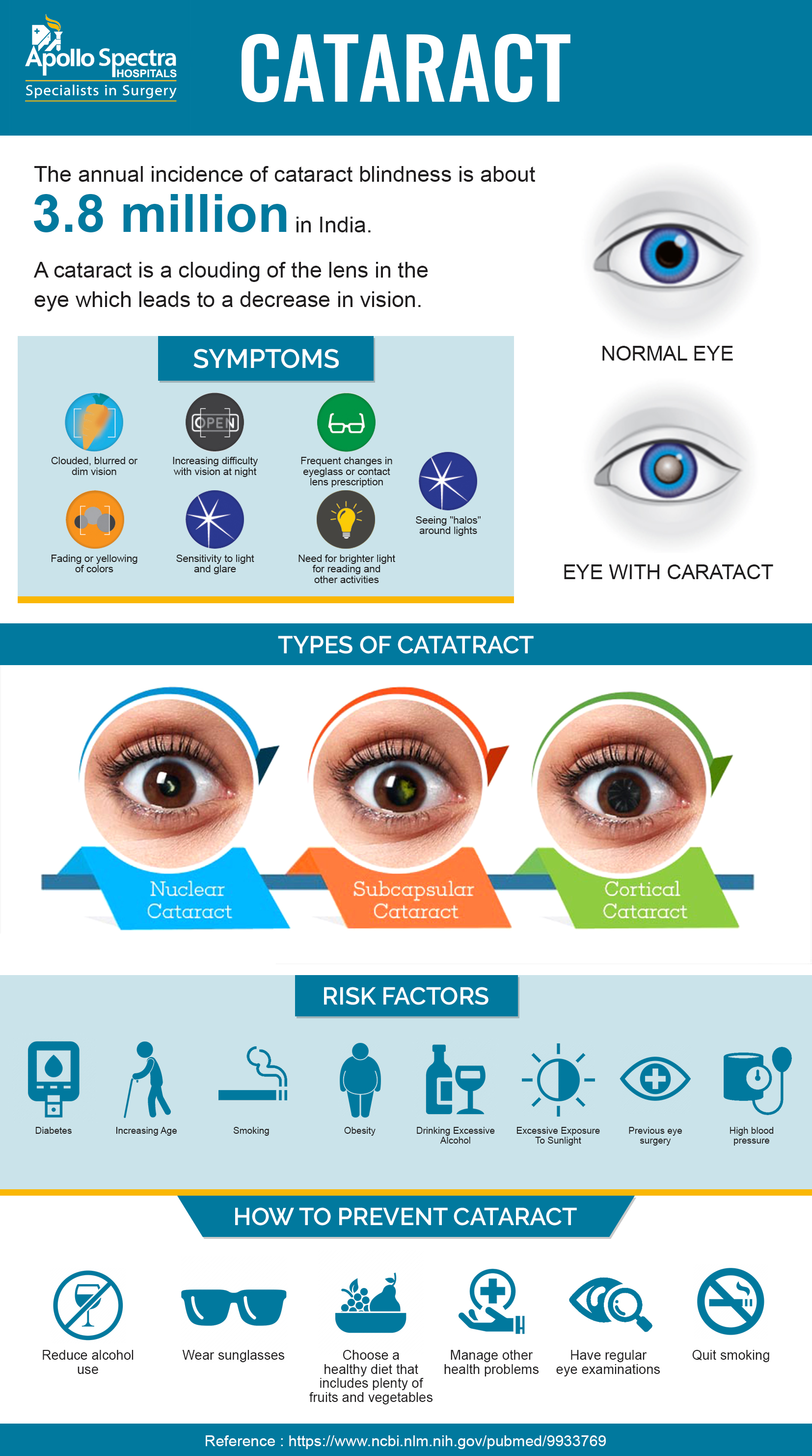Reduce Your Risk of Cataract by Eating a Healthy Diet
August 21, 2019
Cataract Overview:
A cataract is an eye disease that causes clouding of the eye’s lens due to the natural aging process. It will gradually progress into a visual blur, sensitivity to light, and then complete blindness. In fact, cataract is the major cause of blindness for people above the age of 40. Some surgeons believe that cataracts are inevitable but there are some steps that you can take to delay the progression and the need for surgery.

Here, we have compiled a list of foods that will help you prevent cataracts:
-
Salmon
Salmon contains astaxanthin, a carotenoid. It helps in retarding the formation of cataract and protecting the eyes from any radical damage. It is also rich in DHA (docosahexaenoic acid). People who eat fish three times a week have 11 percent less risk of developing cataracts than people who eat fish just once a month.
-
Orange juice
Vitamin C can help prevent cataracts or at least delay it and Orange juice is very rich in vitamin C. A study was conducted in the Oregon Health & Science University that showed that to help the nerve cells function properly, eyes need Vitamin C. If you take sufficient amount of Vitamin C, the risk of developing cataracts will be reduced by 64 percent.
-
Green tea
Black and green teas are used to decrease the level of glucose and reduce the risk of developing a cataract by 50 percent. A study in China showed that green tea, containing powerful oxidants knows as catechins, can protect eyes from cataracts. A single cup of tea can have its effects last for about 20 hours.
-
Walnuts
Walnuts are rich in omega-3s, Vitamin E, and antioxidants. They help fight inflammation and promote cardiovascular health. They also lower the levels of C-reactive protein that increases inflammation in the body. Just a few walnuts a day can reduce the risk of developing a cataract by about half. Other nuts like almonds, pecans, peanuts, and hazelnuts have similar benefits. The omega-3 fatty acids are converted into DHA and eicosapentaenoic acid, also known as the sight-saving EPA.
-
Bilberries
Closely related to huckleberries and blueberries, bilberries contain chemical named anthocyanins. These not only give bilberries a dark purple color but also prevent the vessels and arteries of the eyes from narrowing and fights inflammation.
-
Kale
Rich in zeaxanthin and lutein, Kale protects the tissues of the eye from sunlight and reduces the risk of macular degeneration and cataracts. You can also try other green, leafy vegetables like spinach, broccoli, collard greens, turnip greens, oranges, corn, honeydew melon, kiwi, yellow squash, mangoes, and red grapes. You need this with a source of healthy fat like avocados or olive oil so that your body has enough fat to absorb zeaxanthin and lutein. Kale also contains Vitamin C which is another nutrient good for eyes.
-
Sweet potatoes
These are a rich source of beta carotene. This reduces the risk of macular degeneration. This beta carotene is converted into vitamin A that prevents dry eyes, night blindness, and cataract. It also reduces the risk of infection. If you don’t like eating sweet potatoes, you can try other deep orange foods like butternut squash, carrots, and green foods like collard greens and spinach. Other great sources of vitamin A include milk and eggs.
-
Avocados
These nutrient-rich foods are great for the eyes. The lutein present in avocado helps reduce macular degeneration and cataract. It also contains other essential nutrients for eyes like Vitamin C, Vitamin E, Vitamin B6, and beta-carotene. When it comes to the best food for eyes, avocado definitely comes in the top 10.
NOTICE BOARD
CONTACT US
CONTACT US
 Book Appointment
Book Appointment


.svg)
.svg)
.svg)
.svg)








